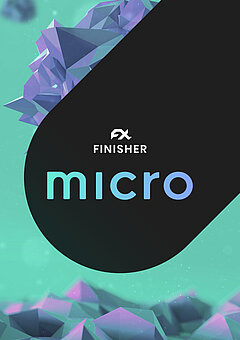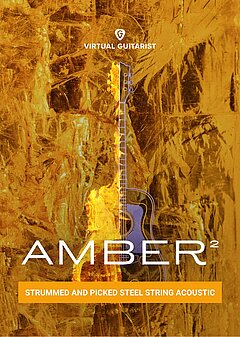How to Create a Professional Music Production Schedule
An in-depth look at 3 different approaches to productivity and how to use them maximize your time while having fun
JUNE 3RD, 2023
There’s no one solution to scheduling, and you might find that you love certain approaches but completely hate others — try several and see what helps you stay inspired and enjoy the process in both the most intense periods and lighter stretches. Nothing will ever be perfect, but the right schedule will allow you to sit down and get into a flow state quickly, even when you’re not in the mood; that’s the power of a great schedule. Now let’s get right into it!
Micro-chunking
This is great if you work well under pressure and are naturally inclined towards maximum productivity. Here’s the basic idea: Block out short periods of time during the day for smaller tasks — you can use objectives like “create 5 bass patches”, “mix the chorus of X song”, “finish the drop”, etc. Set a timeframe where you focus only on this one task, and make it ambitious; if you think you can do it in 45 minutes, constrain it to a 30-minute chunk and keep moving. When time’s up, stop, even if you still have the energy to keep going. Go do something unrelated until your next chunk with a time barrier in between, at least a few minutes long. This will help train your brain to stay focused during these chunks and get into a groove faster!
Another benefit to this approach is that it requires you to get extremely specific about your desired outcome, as opposed to “work on new house track” ... which can quickly devolve into you spinning your wheels for hours reworking certain sections. Small, measurable goals can help you accomplish much more over time; the key is sticking to your timeframes and moving on once the result is good enough for your needs.
A quick note, though: If you don't enjoy pushing yourself to hit deadlines, this method may be more stressful than it's worth. As with any productivity method, see what feels right to you and adjust accordingly.
Themed days
One of the best ways to eliminate mental clutter and overwhelm is to dedicate each day to one type of task only. For example, you could reserve Mondays, Wednesdays, and Fridays solely for music. If you don't love the business side of the industry, this allows you to carve out entire days where you don't have to think about it at all. You get to stay in creative mode for long stretches of time without interruptions, and the essentials still get done on Thursday and Friday. It's a good idea to take weekends off when you can, but if you enjoy the work and want to put in extra time, you can add additional days into the rotation at your leisure.
Many people find that putting on a different hat each day allows them to work with more enthusiasm and less guilt and avoid the mental taxation of switching focus multiple times each day (or each hour). A major downside is that you may feel cut off from certain aspects of your work when you don't allow yourself to touch them for long stretches — if this ends up clouding your mind more than freeing it up, themed days aren’t the best choice. Additionally, you might find there are certain things you can't relegate to specific days: answering client messages, revising projects on tight deadlines, and anything else that's time sensitive. If the idea of themed days creates more stress for you but you like the idea of dedicating long periods of time to a single focus, there’s another option that may do the trick.
Flexi schedule
For better or worse, being a professional music producer means juggling a number of different business and creative tasks at once. If you struggle with being pulled in a million different directions (finishing music, making content, reaching out to labels and potential clients, etc.) and frequently get overwhelmed — especially if you're the type of creative who naturally hates structure — using a “flexi schedule” is an excellent way to help you juggle a litany of tasks at the same time.
Here's the core idea: Break up your day into large, unequal time blocks (start with 1-3 hours, but the time range is entirely up to you), leaving smaller blocks for lunch, exercise, etc. Rather than assigning specific activities to each block, give them individual themes. One might be “music”, which could mean writing, recording, sound design, mixing, mastering, anything and everything related to music. Another could be “outreach”, which might mean posting on social media, reaching out to potential clients, answering business-related messages, and so on. He might also have another time block dedicated to “logistics”, implying anything from sending out invoices to making sure your contact details are up to date or itemizing your income and expenses (which should ideally be a smaller block than the other two). The moment each block is finished, put that theme aside.
Decide on the fly what you want to do during these time blocks, as long as it's clearly related to the block’s theme and you're sticking to essential (rather than nice-to-have) tasks. This level of freedom is a nightmare for some, but other creatives thrive in it when nothing else seems to work. If you’ve tried nearly every productivity system imaginable and everything feels too constricting, a flexi schedule might be the perfect balance between chaos and order that allows you to consistently get things done!
Wrapping up
These are by no means the only three options for scheduling in your music production business, of course — you might find that none of them quite deliver on their own but some combination of them (or an entirely different approach) does the trick. Allow yourself some grace in figuring out what works for you, but once you have it ... don’t keep trying tons of new things!
When you find something that works, keep the majority of it and allow yourself to test small changes here and there. If you commit to implementing enough strategies, you’re bound to find something that clicks with you; so stick with it, find out what delivers the best combination of fun and productivity, and good luck with your music production schedule!
Stay up to date
Sign up and we’ll send you an e-mail with product news and helpful stuff every now and then. You may unsubscribe at any time.
Defy Limits
We develop software solutions that enable people to create, consume and interact with music.




